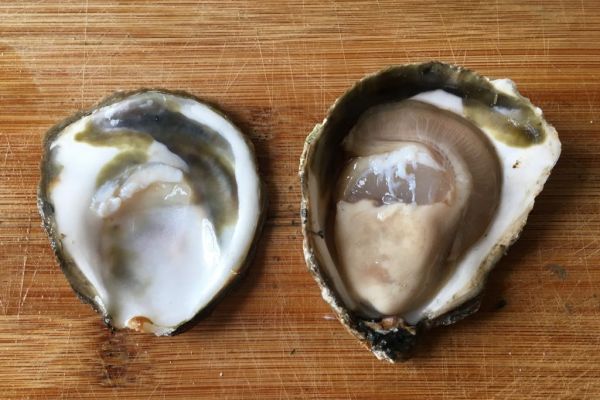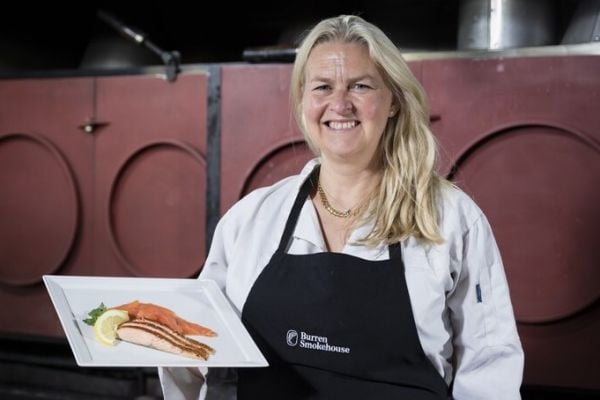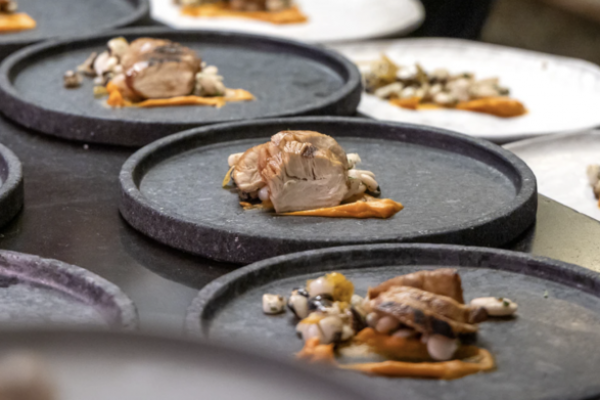Joffrey Dubault believes he can make the world his oyster -- a raspberry or ginger flavoured one, that is.
The 29-year-old French farmer of the shelled seafood began selling flavoured oysters two months ago to entice youngsters who are less enamored of the delicacy than their parents or grandparents. While local connoisseurs are turning their noses up at the idea, Dubault is shipping them by the crates to places as far as Hong Kong.
“I thought that if there’s no need to get the lemon separately, it’ll tempt a younger crowd to have oysters with pre-dinner drinks” Dubault said over the phone between two deliveries. “It turns out that restaurants in China, Dubai, Spain, Belgium and Italy fell for the idea.”
As the festive season reaches its peak in Europe, his farm in Marennes, on the French Atlantic coast, is shipping one to two tons of flavored oysters a day, with a taste of lemon or shallot, or sweet wine, ginger or raspberry. Although Dubault has signed a contract with a French supermarket supplier, about 60 percent of his oysters are going abroad.
“In France, flavored oysters are an entry level product; but in Asia, there’s high demand, so they can be sold at a much higher price by exclusive restaurants or wholesalers,” Dubault said. Flavored oysters sell for up 15 euros ($18) a dozen. They already represent more than a quarter of his oyster sales and Dubault expects to double sales next year.
Scented Seawater
The son of an oyster farmer, Dubault grew up in oyster territory on the island of Oleron, on the Atlantic coast. Like most local youngsters, he turned to the sea when he hit the job market, fishing for shells until he got started with oyster farming in 2013. He sold his produce mostly in Parisian markets.
Although Dubault came up with the idea of flavored oysters a while ago, getting the method just right took some time: he soaks the oysters in flavored seawater for between two and 12 hours depending on the aroma.
Dubault knew he had a winner when he took his product in April to the largest European gathering for the trade -- the Brussels Seafood fair -- and found curious Chinese restaurants owners stopping by his stand.
With a pretty small oyster farm -- 2 hectares compared with the country’s average of 5 hectares -- Dubault is having to buy oysters from neighboring farms to keep up with demand. The contacts he made at the fair have brought in an avalanche of orders since he started production in October.
Interesting Experiment
France has seven oyster-producing regions, each boasting several types of the shellfish. They vary in size, shape and taste depending on the farming environment such as the type of soil or water.
In Cancale, on the French side of the English Channel, across the island of Jersey, Alexandre Prod’homme says he’s watching the flavored-oyster experiment with interest. While his farm has specialized in quality farming with methods handed down by his grandparents, he worries the French oyster clientele is shrinking as it gets older.
"Many people, especially under 45, easily eat mussel but balk at oysters," he said in a phone interview. “There are fewer and fewer people who’ve learned to appreciate oysters at home and are willing to pay the price for a meaty oyster with a hard shell." Flavored oysters may trigger new interest, he said.
Not OK
Others consider flavored oysters sacrilegious. For Eric Mayer, the owner of an oyster bar named Pleine Mer (Deep Sea) in the 10th district of Paris, the idea is simply horrifying.
"It’s ludicrous, ” he said. “The oyster won’t like it and it’ll kill its taste; it’s a living being after all," the 58-year-old said.
It’s sticklers like Mayer who make the home market hard for Dubault to crack. Still, that’s not something he’s worrying about right now. Although he has signed a contract to supply France’s largest grocer E. Leclerc -- betting he can boost demand with a less complicated but novel and cheaper product -- he is barely able to keep up with foreign demand.
Dubault hasn’t yet gotten around to setting up a website. Orders are coming through his So’ooh L’Huître Aromatisée Facebook page, as well as through word of mouth. He is convinced there is scope to grow: he’s experimenting with truffle and already plans to add a pepper oyster to his annually available selection next year. He wants to add seasonal flavours as well, starting with grapefruit and Mirabelle plum next spring.
For all his success overseas, the young farmer will eventually need to win over customers in France, the world’s largest consumer of fresh oysters. That will mean convincing the likes of Mayer, who offers platters of different oyster types in a tasting order so each variety can be appreciated separately.
"In my bar, there’s no vinegar and I discourage having even lemon with oysters," Mayer said.









